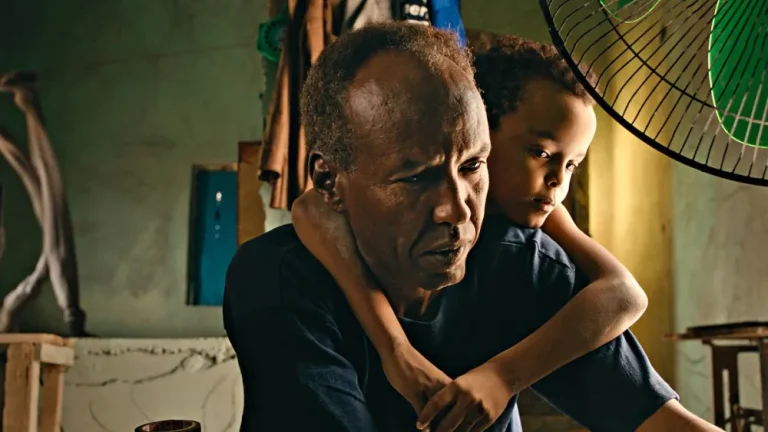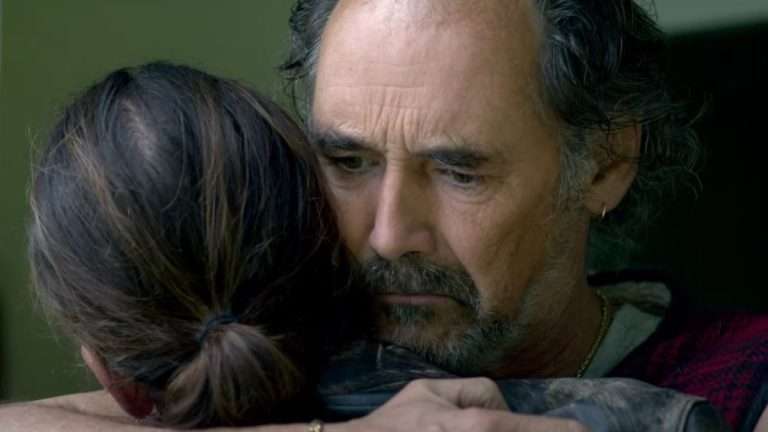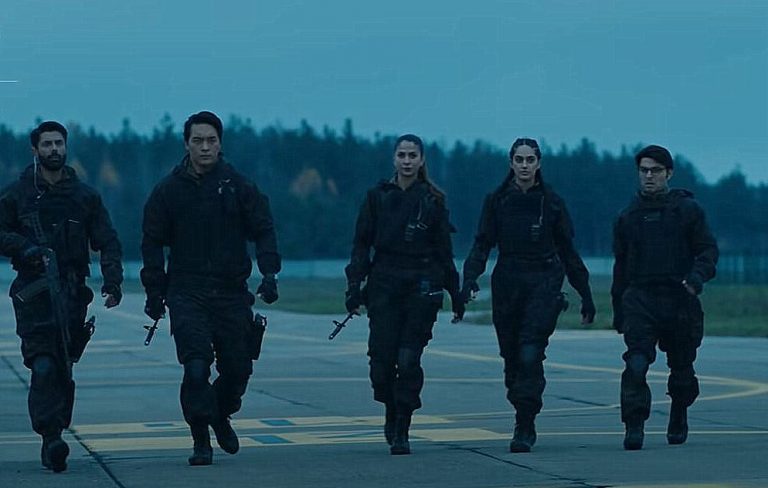David Bim’s “To the West, in Zapata” has one of the most arresting first chapters of any film playing at Visions du Reel. We are wholly immersed in the daily life of the middle-aged Landi as he toils away in a forest. There’s no exposition, just a slow, gradual acquainting with how he goes through a day alone. Only a radio provides a slant of context: the pandemic is on, the year is 2021, and we’re in a remote corner of Cuba, a country struck by social upheaval. Revolutionaries are summoned to take to the streets, there’s deep instability.
This social, larger sense is a patina that informs the steep situations we witness. Landi tows his boat and nabs crocodiles skulking about in the swamp. A vigorous, violent tussle ensues, the crocodile lashing to free itself off which he puts down with remarkable ease and control. He’s been doing this for a while. With great exertion, he foists it, ties it to the boat, and tugs it back to his marooned shelter. He’s cut off from the world.
This section distils its essence from a vividly rendered sense of place and having to elbow a way through a situation no matter how seemingly impossible. Just when we begin to itch to know more about Landi and his place in the world, Bim shifts focus and gears in the second half that dwells on his wife, Mercedes, and their child, who pin their hopes on his return that will bring sustenance.
In richly contrasted, evocative monochrome, “To the West, In Zapata” puts the grime of a tough life at the centre. There’s so much harshness and difficulty the family, flung apart, has to endure. Uncertainty and precarity riddle their lives especially in the particular moment we encounter them. The film doesn’t go into elaborate lengths to furnish significant background and detail how their lives have moved and what all they have been through. Whatever be it, the present situation is complex. It demands the couple to adapt with nerves of steel, a persona that can withstand the worst of survival challenges.

It’s an isolated silo within which we meet the two. Human habitation is tightly cleaved apart as the pandemic exerted itself. Fending for oneself gets compounded with acute loneliness, the fear of not being sure where the next meal can come from, how it can even be possible. There’s grinding poverty, and a life at the margins is furthermore exacerbated in such circumstances.
Mercedes has to grapple with intense, unsparing anguish and dread as she waits for her husband to return home with food. Bim is spare in his depiction but we feel every beat of the nerve-wracking anticipation spiked constantly with apprehension that something may have gone awry with Landi and he isn’t coming back. How would Mercedes support herself and their child? Can they retrieve themselves from such a situation should everything close down?
The documentary has tragedy in its bones but carries the couple’s stern, indomitable resilience, their ability to weather the most severe odds and scratch out a place for themselves, no matter how puny or terribly insufficient. At least the family can somehow scrape through. Being wholly shut down from a community must also pose its own turmoil and unsteadiness. There’s no one to turn to and vent to.
“To the West, in Zapata” is a bristling portrait of this acute vulnerability, gnawing loneliness sharpened by economic despair and social doldrums. When the two conjoin, can mercy exist anywhere? The film offers no salve or easy answers, dangling us in chasms of vagueness as to how the family, like many, stripped of a livelihood, will stay afloat. Overall, “To the West, in Zapata” is as agonisingly rooted as it is grimly unsettling.



![The Kid [1921] Review – The Most Poignant of Chaplin’s Silent Masterpieces](https://79468c92.delivery.rocketcdn.me/wp-content/uploads/2020/02/The-Kid-1921-768x575.jpg)
![Kaali Khuhi [2020] Netflix Review- A Sober Exercise in Silliness](https://79468c92.delivery.rocketcdn.me/wp-content/uploads/2020/11/Kaali-Kuhi-3-highonfilms-768x403.jpg)



